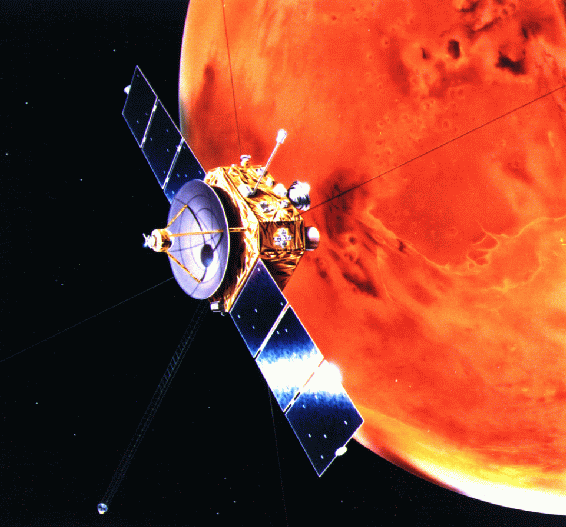Fifteen years ago today — July 3, 1998 — Japan launched an M-5 rocket from the Kagoshima Space Center carrying the Nozomi spacecraft on its way to the Red Planet.

(Nozomi. Image from the National Space Science Data Center.)
Nozomi (meaning “Hope”) was originally known as “Planet B,” and was Japan’s first space probe sent to orbit Mars. It carried instruments to study the Martian atmosphere, but unfortunately a propulsion system malfunction during its swing by Earth on December 20, 1998, ultimately prevented the spacecraft from entering orbit.
To try to save the mission, operators developed a contingency plan by which Nozomi would
remain in heliocentric orbit for an additional four years, including two Earth flybys in December 2002 and June 2003, and encounter Mars at a slower relative velocity in December 2003.
However, another snag occurred in April 2002, as Nozomi was approaching another Earth flyby, when
powerful solar flares damaged the spacecraft’s onboard communications and power systems. An electrical short was caused in a power cell used to control the attitude control heating system which allowed the hydrazine fuel to freeze. The fuel thawed out as the craft approached Earth and maneuvers to put the craft on the correct trajectory for its Earth flyby were successful.
Operators guided Nozomi through the next Earth flyby in June 2003, but as the spacecraft approached Mars in December, it could not be put in the correct orientation to fire its main thruster for orbital insertion. As a result, Nozomi flew by Mars on December 14, 2003.







